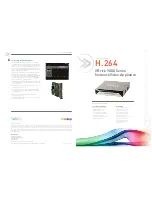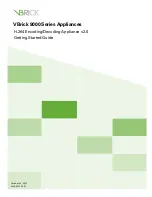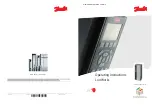
102
•
Transmission Modes
WAVECOM Decoders v6.15 W40PC, W41PC, W51PC
Transmission Modes
Fundamentals of Telegraph Transmissions
A basic understanding of how digital information is transferred by land line or radio links is
necessary to fully exploit the many features of the WAVECOM decoder. It is assumed that the
user is familiar with the general working of telecommunication systems, in particular radio
systems.
By
digital information
we mean information which is represented by discrete states of the
transmission medium. In contrast to this
analog
information is represented by an infinite
continuum of states. For example live music is analog information, whereas the same music
recorded on a CD has been transformed into digital information imprinted in the surface of the
disc. Digital information or data is not only text, it is also speech, music or images.
A land line, short wave link, satellite link or any other way of connecting two points for
communications is called a
channel
.
Bits, Codewords and Codes
The basic building block of data and telegraph signaling is the "
bit
", a word derived from
"binary digit", so called because it can assume only one of two states, "Current" (logical '1',
"Mark" or low frequency, positive voltage) or "No Current" (logical '0', "Space" or high
frequency, negative or zero voltage).
On the channel one or more bits may be represented by a signaling unit called a
Baud (Bd).
Bits are assembled into patterns or
codewords
with a certain length which is expressed in
number of bits. The codewords represent all or a part of the entire alphabet including letters,
numbers, special characters and control codes, or represent the pixels of a fax or the digitized
speech.
Codewords are assembled into
alphabets
or
codes
. In some codes the codewords are of
unequal length. A distinction should be made between
source coding
, which is the coding
used to communicate between a data source or sink (a teleprinter, a PC) and data
communication equipment, e.g. a modem or a decoder, and
channel coding
, which is the
coding used on the channel between the transmitting and receiving data communication
equipment. Sometimes the source code is also used as the channel code.
The Morse code is an
unequal-length
code. Codewords are composed of dots - the smallest
unit -, dashes and spaces, one dash being equal to three dots. "E" is the shortest character
represented by a dot equal to one (1). Zero (0) is the longest codeword represented by “dash-
dash-dash-dash-dash" equal to 19 dots, '1110111011101110111' in binary notation. The reason
for the unequal length of the codewords was the desire to reduce the amount of work for the
operator when transmitting many messages. Samuel Morse found by visiting a Philadelphia
printing office, that the compositors had sorted the lead types in such a way that the types most
frequently used were the ones most easily accessible.
An example of an equal-length, but non-integral code is the Baudot or ITA-2 alphabet, which
was formerly in use on the majority of the world's land lines and radio links. It is still the base
for many codes constructed later, as compatibility to existing equipment and networks is
essential.
Содержание W40PC
Страница 1: ...WAVECOM Decoders v6 15 W40PC W41PC W51PC by WAVECOM Elektronik AG...
Страница 56: ...48 General Operating Procedure WAVECOM Decoders v6 15 W40PC W41PC W51PC...
Страница 238: ......
Страница 242: ......
Страница 246: ......
Страница 252: ...244 Manual History WAVECOM Decoders v6 15 W40PC W41PC W51PC W40PC New modes AMSAT P3D AUM 13 CIS 36 50 CIS50 50 MFSK 20...
















































